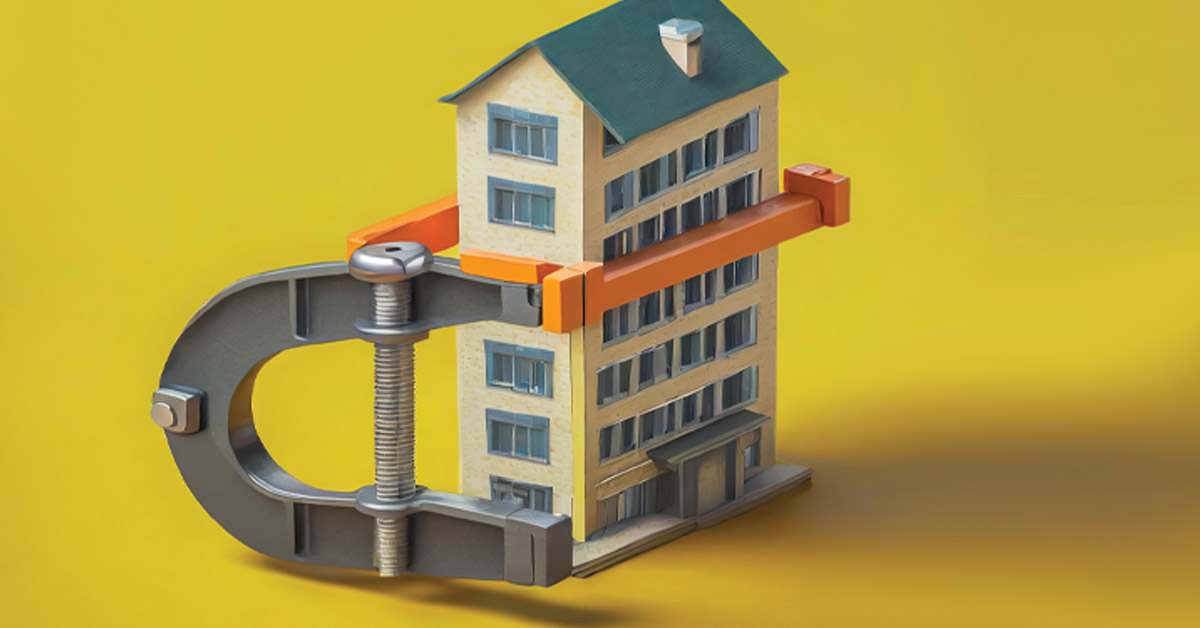Investing in multifamily real estate has been a wise choice for those seeking long-term, appreciating assets. Multifamily housing is much more than just a great investment, however. This sector stands as a dynamic force, not only in the realm of real estate but also as a catalyst for positive change within local communities.
Unlike other investments, multifamily properties often yield consistent incomes, with rents covering all associated expenses, including mortgage payments and taxes. This type of investment also allows for diverse living options, increased urban density and greater affordability. Because of these and other benefits, commercial brokers should be able to explain why such developments belong in every community.
Major player
Multifamily is a larger real estate sector than many realize, accounting for about 42% of the total U.S. housing investment market. It deserves the same attention offered to single-family homes in real estate discussions.
This is a diverse sector, with apartment buildings featuring rental units with shared amenities, and condominiums offering a mix of ownership and rental aspects. Townhomes provide a middle ground between apartments and single-family homes. Mixed-use developments integrate residential and commercial spaces to create vibrant, self-contained communities.
Investors in multifamily housing already know how valuable the sector can be. It presents several financial advantages, including both efficiency and sustainability. This form of housing maximizes land utilization efficiency, accommodating more people per square foot compared to low-density housing. Multifamily buildings not only optimize the use of available land, but also address the growing demand for housing in urban areas where space is limited.
Furthermore, high-density housing promotes environmental sustainability. While specific figures may vary, multifamily buildings generally contribute to reduced energy and water consumption per resident compared to low-density housing. The concentration of residents in a single structure allows for more efficient resource usage, aligning with eco-friendly practices.
Additionally, multifamily housing can foster a sense of community, reducing traffic congestion and pollution. Multifamily housing can also offer a more connected living environment. This community aspect can enhance the overall appeal of multifamily properties, attracting tenants seeking a sense of belonging and shared experiences.
Community benefits
Multifamily housing brings numerous benefits to communities, including affordability and maintenance-free living experiences. This type of housing is generally more affordable than single-family homes. Subsidized housing programs further support low-income families, ensuring that a diverse range of individuals can access decent and affordable housing options.
Apartment living is often more cost-effective than owning a single-family home. Tenants in multifamily housing enjoy lower costs, avoiding property-related responsibilities such as taxes and large mortgages. This affordability factor is especially crucial in the current real estate landscape, where the shortage of homes has heightened the importance of multifamily options.
Moreover, with reduced responsibilities for property maintenance, residents can enjoy a convenient and hassle-free lifestyle. Multifamily housing can also contribute to the well-being of its residents, particularly in the realms of mental health and the promotion of a sense of community. Social interactions and a sense of belonging derived from shared spaces can help create a supportive environment. The opportunities for social connection within multifamily living can mitigate feelings of isolation and enhance overall life satisfaction.
A sense of community can develop in such properties, enriching individual lives and helping to create a network of support that extends beyond the walls of individual units. By promoting communal living, this form of housing encourages the sharing of experiences, fostering a dynamic and interconnected living experiences that enhance the overall quality of life for its residents.
Government role
The United States government plays a pivotal role in supporting multifamily housing, using various initiatives to bolster mortgage accessibility, particularly during challenging market conditions. One key mechanism is the federal backing of the multifamily mortgage marketplace.
Agencies such as the Federal Housing Administration (FHA), the Rural Housing Service (RHS), and government-sponsored enterprises such as Fannie Mae and Freddie Mac are instrumental in facilitating mortgage accessibility for multifamily properties.
The Federal Housing Administration (FHA) offers mortgage insurance for multifamily loans, providing lenders with added security and incentivizing them to extend financing to a broader range of borrowers. This backing is especially crucial during economic downturns or when market conditions pose challenges to private lending. The FHA’s involvement enhances the confidence of mortgage brokers and lenders, enabling them to offer more favorable terms and lower interest rates to multifamily property investors.
Similarly, the Rural Housing Service (RHS) focuses on supporting multifamily housing in rural areas. By offering loan guarantees and direct loans, the RHS encourages investment in rural multifamily developments. This commitment ensures that even in less populous regions, where private financing may be limited, there are avenues for securing loans to promote housing initiatives.
Fannie Mae and Freddie Mac are major players in the multifamily mortgage market. They provide liquidity by purchasing and guaranteeing multifamily loans, allowing lenders to free up capital and make more loans available to borrowers. This secondary mortgage market function ensures a steady flow of funds to support multifamily housing projects across the country.
For mortgage brokers, these government-backed programs create a more stable and accessible landscape for securing loans on behalf of their clients. The active involvement of the government in supporting this housing choice through these initiatives underscores a commitment to promoting affordable housing options. At the same time, the government ensures the stability of the multifamily mortgage market, benefiting both investors and communities seeking accessible and sustainable housing solutions.
● ● ●
Multifamily housing serves as a strategic and sustainable investment for real estate investors, optimizing land use and promoting environmental efficiency. Simultaneously, it addresses affordability challenges in communities, offering cost-effective living options with a focus on community engagement. It even contributes to environmental sustainability. As the demand for housing increases, multifamily living will play a pivotal and practical role for both investors and communities alike. ●
Author
-

Raul Correa Kemish, president of US Mortgage Wholesale, is a distinguished commercial loan specialist. With a strong background in finance and sales, he leads a licensed bilingual team dedicated exclusively to crafting innovative commercial loan solutions nationwide. Known for surpassing client expectations, Kemish invites collaboration in the dynamic world of commercial lending. Reach Kemish at (720) 800-1411.





